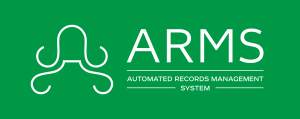The future of Computer Aided Dispatch
- Category - ARMS, CAD, Industry Business
For decades, police have relied on various dispatch systems to help them locate nearby incidents as well as send a team to the site in question. The landscape of computer-aided dispatch (CAD) systems has changed over the years, with ARMS keeping up with or leading the trends in a consistent manner. The software needs to evolve over time in order to continue providing solutions for all types of security teams, something that ARMS ensures is always the case. Explore the advances ARMS has already made to embrace the future of computer-aided dispatch and predictions for the future of CAD.
ARMS has remained an industry leader for several decades
ARMS has been providing police forces and other security teams with computer-aided dispatch software and other technology for three decades. To stay relevant and competitive within the industry, they have developed, updated, and enhanced the software. The simple fact that ARMS has been a leader in the industry for decades indicates a strong ability to innovate and look towards the future of CAD. Over the years, the platform from ARMS has retained a reputation for security and stability, giving customers something that they can count on. The software has also always had a focus on user-friendliness along with innovation. This has led to many customers who have been happily using ARMS software for more than 15 years, if not nearly 20, enjoying the updates and the training that goes along with it.
How ARMS has already adapted
ARMS has already made a great deal of progress to adapt to the changing needs of security teams and police forces. For example, ARMS chose to write all of its applications in Microsoft .Net and use the Microsoft SQL Server, thanks to the reputability and leading-edge nature of these technologies. Another great example of ARMS’ adaptation to changing technology is its creation of multiple integrated pieces of software that can all work together. ARMS CAD, ARMS Mobile, ARMS Records Management, and ARMS Mapping all integrate with each other seamlessly. The same is true of the way that ARMS makes it easy to share data and incorporate your ARMS software with other existing systems. As related reports and standards change, so does ARMS, enhancing its software. The use of mapping is another great adoption of technology within ARMS’ solutions since it harnesses the growing accuracy and usefulness of GPS and GIS. The Mobile CAD and ARMS CAD systems backed by Google Maps and ARMS include mapping of multiple types of data, including vehicles, Clery data, incidents, and more. The simple fact that ARMS CAD works on mobile devices is another indication of the software’s adaptation. The mobile support is a key part of ARMS and allows officers and security teams to enter reports and access data while in the field. What started as a computer-based system has evolved to include all the types of mobile devices that safety teams typically use. The only requirement to use ARMS Mobile is that you can connect to a hotspot, Wi-Fi, or a cellular connection.
What the future of CAD will look like
Computer-aided dispatch has already come a long way, but it will continue to evolve as technology advances. Things like wearable technology and audio analytics show potential applications in CAD systems and we will likely see these pieces of tech incorporated into computer-aided dispatch systems in the near future.
Audio analytics
The use of audio analytics technology will almost certainly play a role in the future of CAD. At the moment, most organizations still consider audio as unstructured data or something that is hard to arrange and analyze. With advances in technology, analysis of audio for deep learning will become even more possible and accessible for the average police force or security team. In terms of short-term applications, audio analytics can understand what a person says when calling the emergency hotline and their emotions based on how they talk. This is actually already in place in some areas such as Copenhagen. There, dispatchers have started to analyze background clues and words to watch out for a sudden cardiac arrest. Another application of short-term audio analytics will be determining if dispatchers are compliant with protocols. This application can lead to improvements in performance and reduction in liability. In the long-term, audio analysis can be used to create customized training for dispatchers. Or teams can use audio analysis with deep behavioral science to study callers and quickly identify the role the caller plays, whether it is perpetrator, victim, patient, or witness.
Wearable technology
Wearable technology is another given for the future of CAD, according to many in the industry. Technology becomes smaller and smaller with the ability to do more every day. Think of it as an extension of wearable devices like the medical alerts that elderly people who live alone use. Or look to Apple and their announcement of walkie-talkie features for future Apple Watches. Public safety teams can use this or something similar in an advanced version to supplement radios or utilize texting via voice. Of course, wearable technology will also likely seamlessly integrate with more and more CAD systems as it advances and becomes popular.
Advancements to GIS
Computer-aided dispatch systems already use GIS technology for computerized mapping that uses multiple types of technology in harmony. Newer CAD systems in the future will incorporate a higher level of GIS that is more powerful, allowing for advanced data visualization and analytics. GIS will let departments access data that can help them pinpoint a location or a route better than just a roadmap.
Only time will tell
While there are numerous predictions of what we can expect from the future of computer-aided dispatch systems, there is no way to know for sure. As technology advances, staying with a CAD system that prides itself on remaining up-to-date will give your team an advantage in the field.

